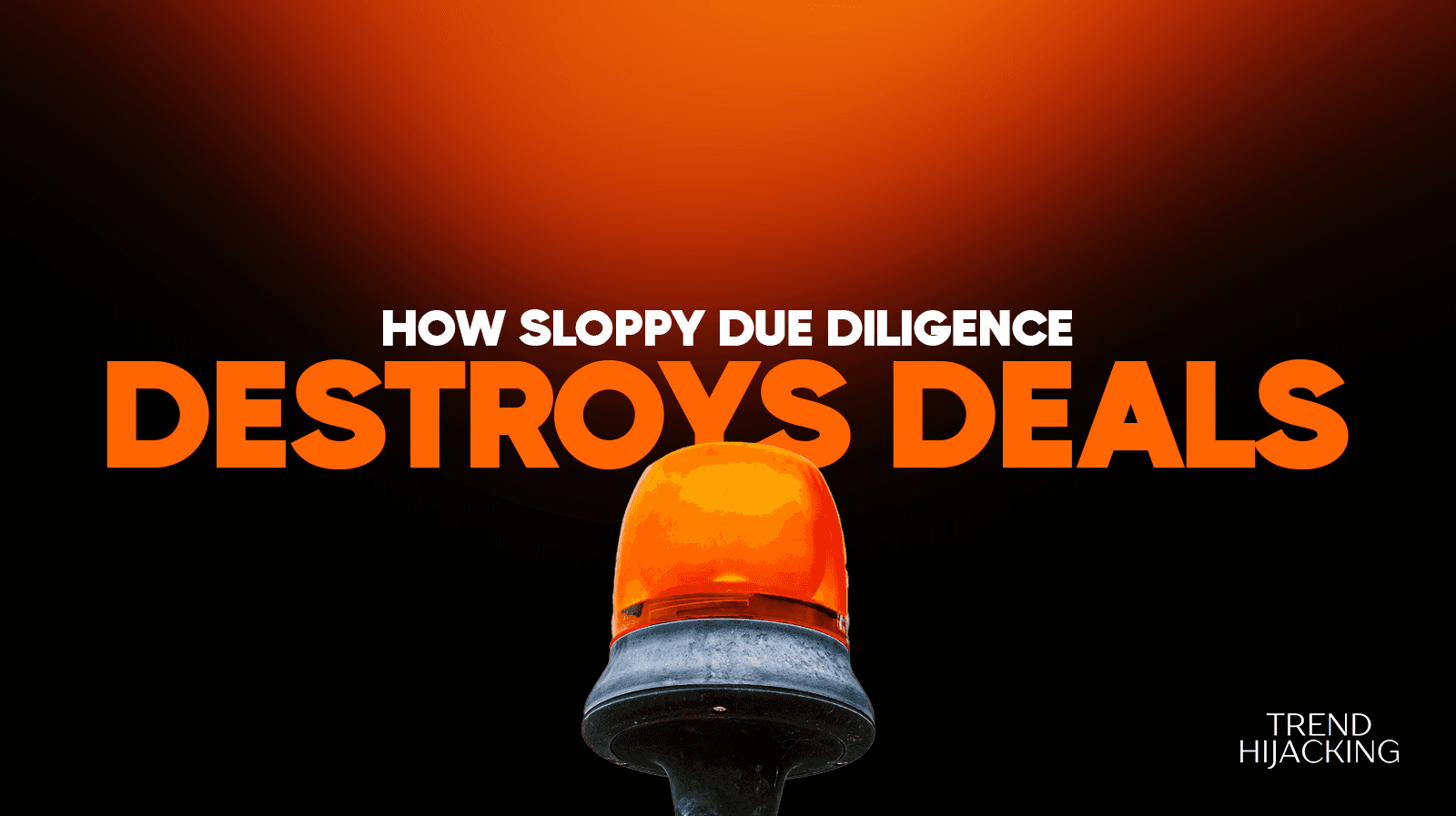How To Calculate Return On Investment When Buying A Business
What ROI Means When Buying A Business

ROI (return on investment) is simply a way to measure the performance of an investment (in this case, a business).
To determine RoI, you compare how much profit you expect to earn in a year against the total cost of acquiring the business.
The result is a percentage.
That percentage tells you how quickly the business pays back the money you put in.
For example;
If you buy an e-commerce website for $500,000 and it produces $100,000 in annual profit, your ROI is 20 percent.
This means the business would pay back your investment in five years.
This is a simple idea, but the real work lies in deciding which numbers to use in the formula.
We Help You Buy / Build, Manage and Scale E-commerce Brands for an EXIT
E-commerce Simplified for Busy Individuals – We handle the buying, building, and scaling, so you can focus on what matters.
Growth-Focused Strategies – From sourcing to marketing, we drive growth and prepare you for a profitable exit.
Expertly Managed Exits – We build a high-value brand designed for a Lucrative exit.
The Basic ROI Formula For Business Acquisition:
Here is the basic return on investment formula to use:
ROI = (Annual Profit / Total Acquisition Cost) x 100
Annual profit refers to the net profit after expenses.
Total acquisition cost includes the purchase price and transaction costs like closing fees, legal fees, and initial working capital.
If the business needs investment right away to fix equipment or hire staff, be sure to include that cost as well.
You want the most complete picture of what you are actually paying.
Deciding Which Profit Number To Use

When evaluating a business for sale, you will often see a figure called SDE (Seller’s Discretionary Earnings).
SDE shows the earnings before the current owner's pay and personal expenses.
Many small business brokers use SDE because it shows how much money an owner-operator could earn.
According to BizBuySell’s 2023 Insight Report, SDE multiples are the most common valuation method used for small businesses.
For larger companies, you may want to focus on EBITDA (Earnings Before Interest, Taxes, Depreciation, and Amortization).
EBITDA is common in private equity and corporate acquisitions.
Both SDE and EBITDA are accepted profit measures. The key is to use the measure that fits the size and nature of the business.
Related: 10 Best Turnkey Businesses To Buy In 2025
Here’s an example ROI calculation:
Let’s go through a practical example...
Suppose you are buying a service business. The business has $150,000 in annual SDE.
The seller asks for $450,000. You expect to spend $20,000 in legal fees and $30,000 on equipment upgrades.
Your total acquisition cost is:
$450,000 + $20,000 + $30,000 = $500,000
Your ROI is:
($150,000 / $500,000) x 100 = 30%
This means the business returns 30% of your investment each year. That is considered strong in many markets.
Comparing ROI To Industry Benchmarks

You might think that once you calculate the ROI figure, that’s it.
However, a single ROI figure means nothing unless you compare it. You need industry benchmarks.
According to the U.S. Small Business Administration, many small business investments produce returns between 15 percent and 30 percent per year.
Businesses with strong systems, recurring revenue, or strategic value often fall in the higher range.
If the ROI is below 15%, you must ask yourself why. Is the business declining? Is there strong competition? Do you need to do major restructuring?
A low ROI does not instantly mean you should avoid the business, but it does mean you need to understand the cause.
Factoring in Debt Financing When Calculating ROI

Most buyers usually use financing when acquiring a business. Now, if you borrow money to buy a business, your cash ROI changes.
You no longer pay the entire acquisition cost upfront, but you take on loan payments.
In this case, you calculate ROI as follows:
Cash-on-Cash ROI = Annual Cash Flow/Cash Invested
If you put $100,000 down and the loan payments leave you with $80,000 in free cash flow per year, your cash-on-cash ROI is:
($80,000 / $100,000) x 100 = 80%
This is why debt can boost ROI. However, higher leverage increases financial risk.
If revenue drops, you still must make loan payments.
We Help You Buy / Build, Manage and Scale E-commerce Brands for an EXIT
E-commerce Simplified for Busy Individuals – We handle the buying, building, and scaling, so you can focus on what matters.
Growth-Focused Strategies – From sourcing to marketing, we drive growth and prepare you for a profitable exit.
Expertly Managed Exits – We build a high-value brand designed for a Lucrative exit.
How To Adjust for Risk Factors When Calculating ROI:

It’s also important to note that return on investment only works when the inputs are solid.
For this, we advise you to always check the following:
How stable are the current customers?
Are there key employees who might leave?
Does the business rely on the current owner’s personal relationships?
Is revenue seasonal or consistent?
If profit is not stable, lower your ROI expectation to reflect risk.
Related: What Happens If You Invest in a Business That Fails?
ROI Considerations When Buying An E-commerce Business

If you’re buying an online business, specifically an e-commerce store, then you might wonder how you can determine the ROI.
First, you need to keep in mind that online/ecommerce businesses rely on traffic, conversion rates, repeat customers, and product margins.
So, the profit calculation here can shift faster than other business types.
When evaluating ROI for e-commerce businesses, pay close attention to the following:
1. Customer Acquisition Cost (CAC)
CAC measures how much you spend to gain one customer. If you buy an online store that relies on paid ads, CAC plays a large role in profit.
A 2023 Shopify report shows that CAC has risen across most e-commerce sectors due to increased competition.
If CAC rises faster than product prices or margins, future profit can decline.
2. Customer Lifetime Value (LTV)
LTV measures the total revenue earned from a customer over time. A store with high LTV and strong repeat purchase behavior is more stable.
A simple rule is that LTV should be greater than CAC by a clear margin.
If LTV is low and the business relies on constant new customer spending, profit may not be durable.
3. Inventory Cost and Stock Requirements
Inventory is part of the acquisition cost and thus a crucial consideration.
You need to include the value of the stock required to keep the store running.
Also, review supplier stability. If the business depends on one supplier, there is a higher risk.
4. Platform Dependence
If 90 percent of sales come from a single channel, such as Amazon or Facebook Ads, your ROI is tied to the stability of that platform. Account policy changes or ad cost increases can affect profit quickly.
5. Margin Trends
Review margin history across the past one to three years. Stable or rising margins signal reliability.
Declining margins may require price increases or supply changes to maintain ROI.
Related: E-Commerce Acquisitions: Red Flags That Could Cost You
Here’s an example ROI for an e-commerce business:
Let’s first define the key values:
Annual net profit after ad spend: $120,000
Purchase price: $350,000
Inventory at closing: $50,000
Transition expenses: $10,000
Total acquisition cost = $410,000
Therefore;
ROI = ($120,000 / $410,000) x 100
ROI = 29%
A 29% ROI is strong if traffic and margins are stable.
If customer acquisition is becoming more expensive each quarter, the future ROI may be lower.
Understanding ROI Before Buying A Business FAQs:

Here are some frequently asked questions on how to calculate return on investment when purchasing an existing business:
How to calculate ROI when buying a business?
To calculate ROI, you should first determine the business’s annual net profit after all expenses. Then divide that net profit by your total acquisition cost, including purchase price, closing fees, and any required initial investments. Multiply the result by 100 to express it as a percentage. This percentage shows the yearly return.
How do you calculate return on investment in a business?
Return on investment uses a simple formula: ROI = (Net Profit / Cost of Investment) × 100. Net profit equals total financial gains minus all costs. The cost of investment should include every expense tied to acquiring and operating the business. The final percentage reflects how efficiently the investment produces profit.
What is a good return on investment when buying a business?
A good ROI depends on risk, industry, and stability. For many small business acquisitions, buyers often seek 15 to 30 percent annual ROI. Higher ROI suggests faster payback, but unusually high returns may signal risk or unstable earnings. Consistent, proven profit is more valuable than a high but uncertain projected return.
Related: Business Acquisition vs. Building Your Own Brand
Conclusion
Calculating ROI when buying a business helps you evaluate whether the acquisition is worth the price. To calculate ROI, you simply use actual profit numbers and include all costs in the acquisition. Compare your result with industry benchmarks and adjust based on risk. Also, consider how financing affects your cash return. A business can be a great investment if the numbers make sense and the plan is realistic. Take your time, ask direct questions, and make sure the financial story is clear. A good business should not only feel right, but it should prove itself through the math.
Let Us Help You Buy A Profitable E-commerce Business
If you want to buy an e-commerce business that is already generating sales, we can guide you through the entire process through our Smart Acquisition system. Our team helps you evaluate financial performance, check customer metrics, confirm supplier stability, and negotiate a fair price. This reduces your risk and ensures you invest in an existing business with promising ROI. If you want support from start to finish, we are ready to help.
A Done-For-You E-commerce Business
Discover how we Build, Launch, and Scale a 6-figure/month Business for You
Learn more
The 6-Step Blueprint to E-Commerce Acquisition
See how we Acquire, Convert, and Scale with Real Case Studies to Prove It.





















